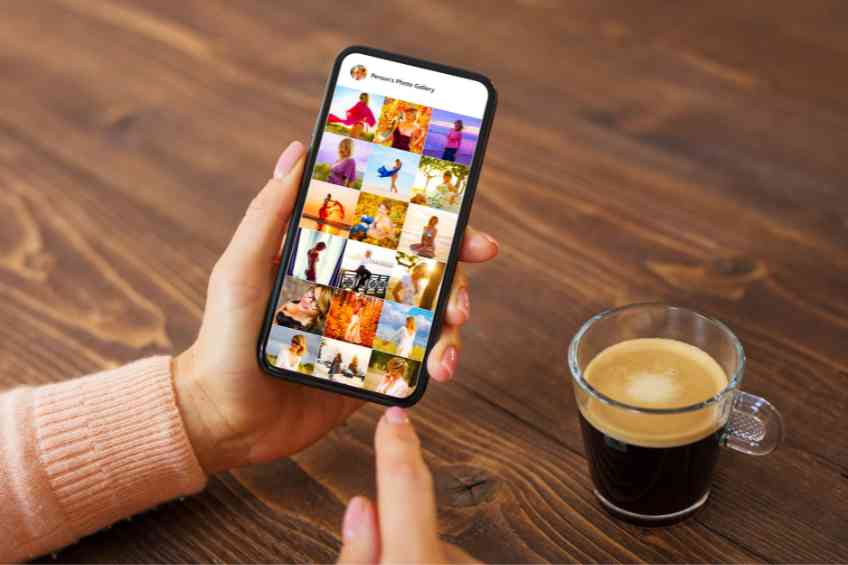By John Salak –
Every week iPhone users receive reports showing their screen time usage. The stark reality of whether people read these reports or not is that everyone uses these devices a lot. Too much? That depends on who is asking and what people are reading.
Whether users get updates on current news events or receive minute-by-minute reports on what is happening with friends, social media provides four billion people worldwide with a curated timeline for endless scrolling. In the United States, an estimated 84 percent of adults use some form of social media. Ultimately, this widespread use of these social media platforms and the information overload they provide is having a profound effect on society, especially when it comes to mental health.
Between wars, climate change, economic fluctuations and the potential for pandemics, news flows can be deflating, disheartening and downright depressive. Unfortunately, these reports are also seemingly addictive no matter how sorry a tale they present.
It has led to a new phenomenon called doomscrolling, which Wired magazine defined as obsessively and continuously scrolling through bad news on social media. This information addiction is fed by the algorithms various platforms have created to constantly stream personally curated articles, blog posts and pictures to individuals they deem newsworthy given their past engagement patterns, Scientific American reports. It also comes in response to a growing sense that the world is out of control, according to some analysts.
There is no argument against staying informed; it supports a healthy democracy. Social media perpetuates confirmation bias and promotes doomscrolling and other unhealthy social media consumption habits. It involves leveraging the fact that humans seek out information, which they perceive as already true. For example, a person believes Michael Jordan is the greatest basketball player ever. When that individual comes across a statistic supporting their notion about Jordan, they internalize the stat as proof their original hypothesis was correct.
Ultimately, this makes confirmation bias a friend of doomscrolling because the more someone wades through various information platforms, the more algorithms push information-confirming facts in from individuals they already believed to be true.
This push feeds information obsession, and it’s potentially exhausting, socially disengaging and mentally depressive impacts.
“It’s bad for mental health because there is no real benefit to doomscrolling,” said psychoanalyst Tess Brigham. “It only makes you more anxious and paranoid about the world around you.”
The harmful impact of obsessive scrolling isn’t limited to just news. An unrelenting focus on social media platforms can lead to unhealthy comparisons with others and diminished self-worth. Consider most people who post on social media work to display an unrealistically positive image of their lives. It means obsessive scrollers are inundated with pictures of vibrant singles, prosperous people, happy couples, great vacations and an endless stream of perfect bodies.
This overwhelming wave of positive and largely unrealistic images can undermine the confidence of scrollers who believe they fell hopelessly behind. The Wall Street Journal underscored the consequences when it reported that a third of teenage girls who use Instagram, for example, developed negative body image issues. Beyond this, virtually all teenagers on Instagram deal with anxiety or depression.
“What [teenagers] see on social media can define what is expected in ways that are not accurate and can be destructive to identity development and self-image,” reported Professor Claude Mellins of Columbia University. “Adolescence is a time of risk-taking which is both a strength and a vulnerability. Social media can exacerbate risks, as we have seen in the news.”
The problem can go deeper over time, added Harvard University Professor Sharon Levy. “Just like the use of alcohol, nicotine, or drugs, swiping triggers neurological reward,” she explained. “Over time, the brain learns to seek social media instead of more natural rewards, putting users at risk of dissociation with meaningful priorities.”
The simple solution is to reduce screen time by limiting or cutting off various social media. Unfortunately, this is easier said than done for many. If going cold social media turkey isn’t an option, one step is to admit there is a problem. It might involve recognizing when mindless scrolling is underway, identifying why it’s happening and then working to divert to another activity, such as reading, exercising, or going for a walk.
There are applications now available that will help limit time scrolling and lock the social media platform down if too much time is spent on anyone. One final option is to create physical barriers to devices that foster scrolling. It would include leaving the phone outside the bedroom when going to sleep, which makes it harder to grab a device and start doomscrolling in the middle of the night.













